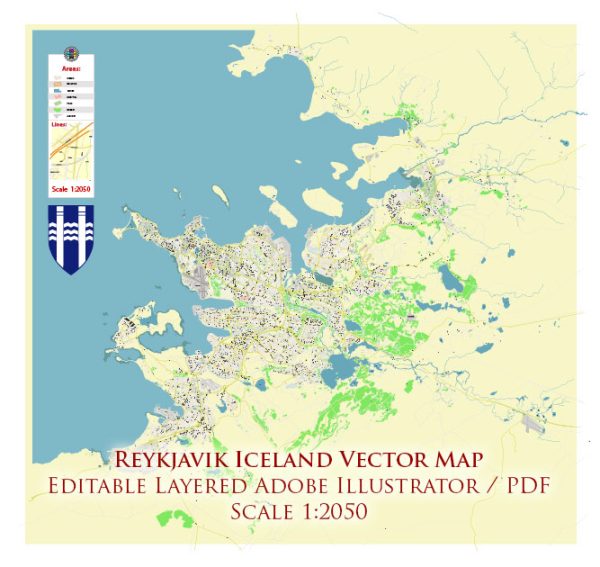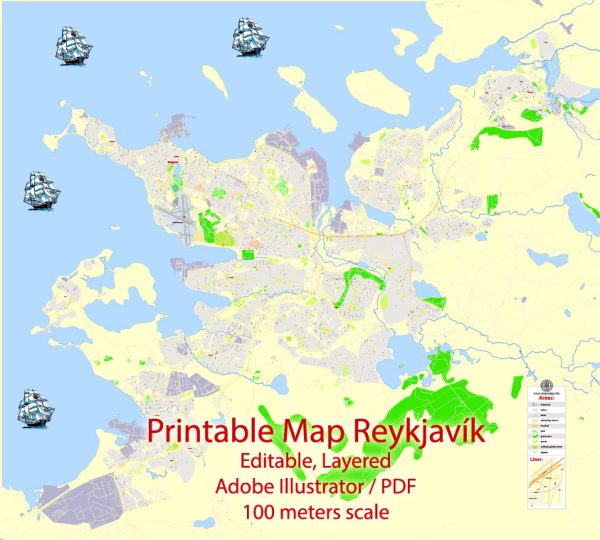Reykjavik, the capital and largest city of Iceland, boasts a unique and diverse architectural landscape that reflects the country’s natural beauty, its history, and contemporary design sensibilities. Here’s a description of Reykjavik’s architecture:
- Modern Design: Reykjavik’s architectural scene has seen a resurgence in modern and contemporary design. The city is home to several innovative buildings and structures that blend functionality with a sleek aesthetic. Glass facades, clean lines, and minimalist design are often seen in these newer constructions.
- Traditional Icelandic Style: While Reykjavik has embraced modern architecture, it still retains elements of traditional Icelandic design. Many buildings feature wooden cladding, colorful exteriors, and turf roofs, which are not only charming but also help to insulate against the harsh Icelandic climate.
- Vibrant Colors: The city’s buildings are known for their colorful exteriors, particularly in the old town area. Brightly painted houses with corrugated metal siding are a common sight, creating a picturesque and cozy atmosphere.
- Harpa Concert Hall: One of the most iconic modern buildings in Reykjavik is the Harpa Concert Hall and Conference Centre. Designed by the Danish-Icelandic artist Olafur Eliasson, the building is characterized by its striking glass facade, which is inspired by the basalt landscapes of Iceland. It’s a cultural hub and a symbol of the city’s commitment to contemporary architecture.
- Hallgrímskirkja: This famous church is one of Reykjavik’s most recognizable landmarks. Designed by Guðjón Samúelsson, the church’s unique architecture is inspired by the Icelandic landscape, particularly the basalt columns found in nature. The church’s tower provides stunning panoramic views of the city.
- Sun Voyager: A prominent sculpture located on the city’s waterfront, Sun Voyager is a stainless steel artwork by Jón Gunnar Árnason. It resembles a Viking ship but is intended to convey the idea of journeying toward new horizons. It’s a popular spot for tourists and locals alike.
- Old Town Charm: Reykjavik’s old town, known as the Þingholt neighborhood, is a picturesque area with charming houses that showcase traditional Scandinavian and European architectural styles. The narrow streets and well-preserved historic buildings make it a delightful place to explore on foot.
- Eclectic Mix: Reykjavik’s architectural landscape is an eclectic mix of old and new, with many buildings reflecting the evolving styles and tastes of the city’s residents and architects. You’ll find everything from modern apartment complexes to historic buildings, creating a captivating blend of aesthetics.
- Sustainability: Given Iceland’s commitment to environmental sustainability, you’ll also find eco-friendly and energy-efficient designs in many buildings. The use of renewable energy sources, such as geothermal heating, is common.
In summary, Reykjavik’s architecture is a fascinating fusion of tradition and innovation, with a focus on incorporating the city’s stunning natural surroundings into its design. Whether it’s the colorful old town, the modern marvels, or the traditional Icelandic elements, Reykjavik’s architecture is as unique as the city itself.



 Author: Kirill Shrayber, Ph.D.
Author: Kirill Shrayber, Ph.D.